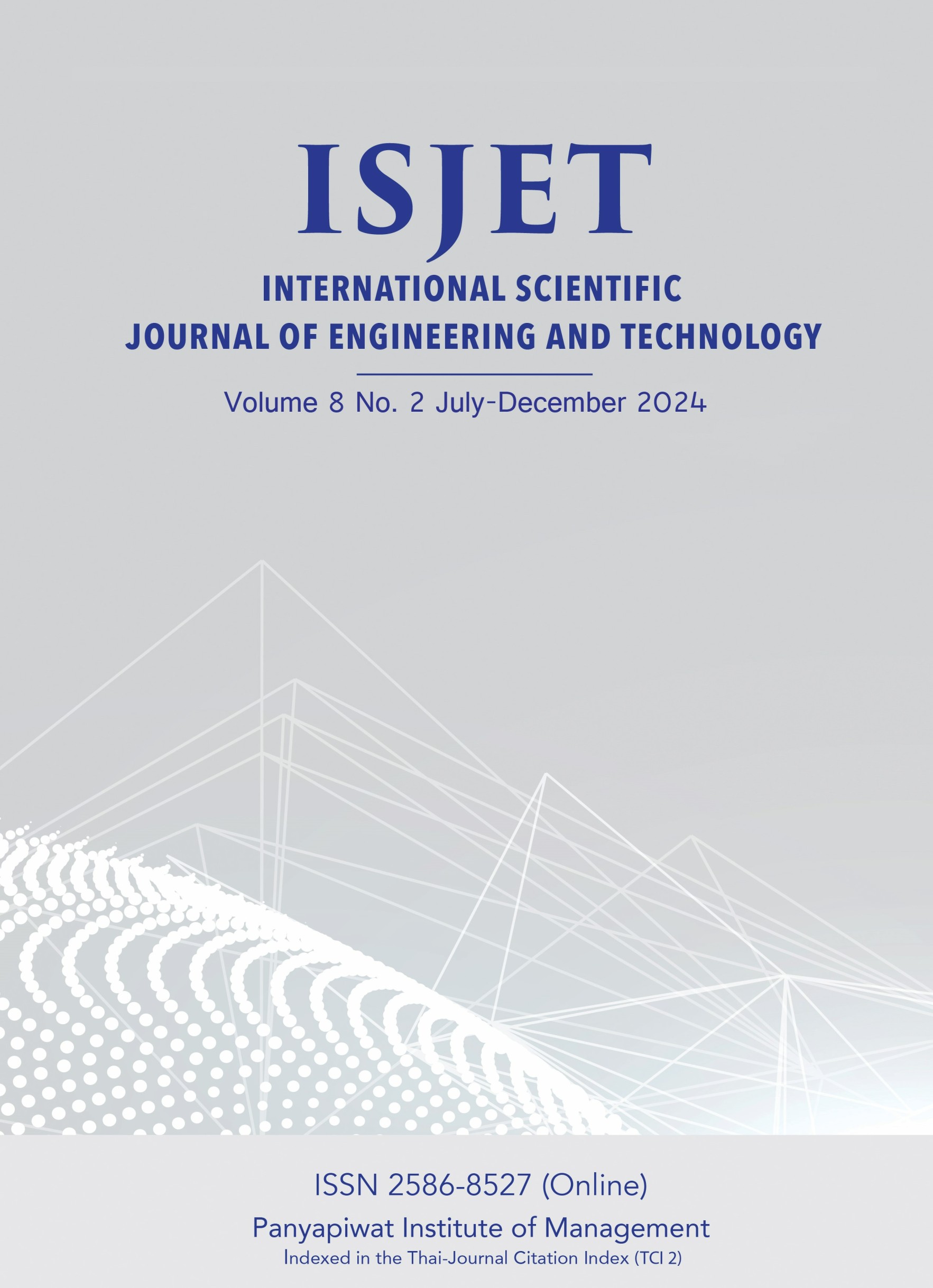A Comparison between Profit and Economic Value Added Optimization to Design a Supply Chain Network: A Case Study of Food Supply Chain in Vietnam
Main Article Content
Abstract
The research field of food supply chain network design and optimization has expanded significantly. However, most recent studies have focused only on minimizing costs or maximizing profits, neglecting other important financial factors that affect the overall prosperity of the chain. This study generates two scenarios in the design of the supply chain network, comparing the maximization
of profit and Economic Value Added (EVA) to assess their effectiveness in real-world situations. The comparison is based on supplier and potential distribution center selection, along with considerations of production level, production capacity, and the sizes of the plant, distribution centers, and retailers. The methodology considered in this research is based on Mixed-Integer Linear Programming (MILP) under deterministic parameters. The study provides computational results and managerial insights based on a case study of the food supply chain in Southern Vietnam. The findings indicate that the EVA maximization model offers a more precise evaluation of company wealth as compared to the profit maximization model as it can determine more suitable operating supply chain’s decision variables leading to a significant decrease of 11.1% in the invested capital.
Article Details

This work is licensed under a Creative Commons Attribution-NonCommercial-NoDerivatives 4.0 International License.
เนื้อหาข้อมูล
References
S. Pang and M. C. Chen, “Investigating the Impact of Consumer Environmental Consciousness on Food Supply Chain: The Case of Plant-Based Meat Alternatives,” Technological Forecasting and Social Change, vol. 201, no. 4, p. 123190, Feb. 2024.
S. Akhtari and T. Sowlati, “Hybrid Optimization-Simulation for Integrated Planning of Bioenergy and Biofuel Supply Chains,” Applied Energy, vol. 259, p. 114124, Feb. 2020.
P. Longinidis and M. C. Georgiadis, “Integration of Financial Statement Analysis in the Optimal Design of Supply Chain Networks under Demand Uncertainty,” International Journal of Production Economics, vol. 129, no. 2, pp. 262-276, Oct. 2010.
P. R. Burgess, F. T. Sunmola, and S. wertheim-Heck, “A Review of Supply Chain Quality Management Practices in Sustainable Food Networks,” Heliyon, vol. 9, no. 11, p. e21179, Nov. 2023.
F. Gholian-Jouybari, M. Hajiaghaei-Keshteli, A. Bavar et al., “A Design of a Circular Closed-Loop Agri-Food Supply Chain Network: A Case Study of the Soybean Industry,” Journal of Industrial Information Integration, vol. 36, no. 3,
p. 100530, Sep. 2023.
F. Gholian-Jouybari, M. Hajiaghaei-Keshteli, N. R. Smith et al., “An In-Depth Metaheuristic Approach to Design a Sustainable Closed-Loop Agri-Food Supply Chain Network,” Applied Soft Computing, vol. 150, no. 5, p. 111017, Nov. 2023.
Statista Market Insights. (2023, Mar. 10). Food-Vietnam.[Online]. Available: https://www.statista.com/outlook/cmo/food/vietnam
E. Badakhshan and P. Ball, “A Simulation-Optimization Approach for Integrating Physical and Financial Flows in a Supply Chain Under Economic Uncertainty,” Operations Research Perspectives, vol. 10, no. 17, p. 100270, Feb. 2023.
P. Longinidis and M. C. Georgiadis, “Managing the Trade-offs between Financial Performance and Credit Solvency in the Optimal Design of Supply Chain Networks under Economic Uncertainty,” Computers & Chemical Engineering, vol. 48, pp. 264-279, Sep. 2012.
A. Nagurney, “Optimal Supply Chain Network Design and Redesign at Minimal Total Cost and with Demand Satisfaction,” International Journal of Production Economics, vol. 128, no. 1, pp. 200-208, Nov. 2011.
M. Kashanian and S. M. Ryan, “Design of a Supply Chain Network for Chemicals from Biomass Using Green Electrochemistry,” Cleaner Logistics and Supply Chain, vol. 10, p. 100132, Jan. 2022.


